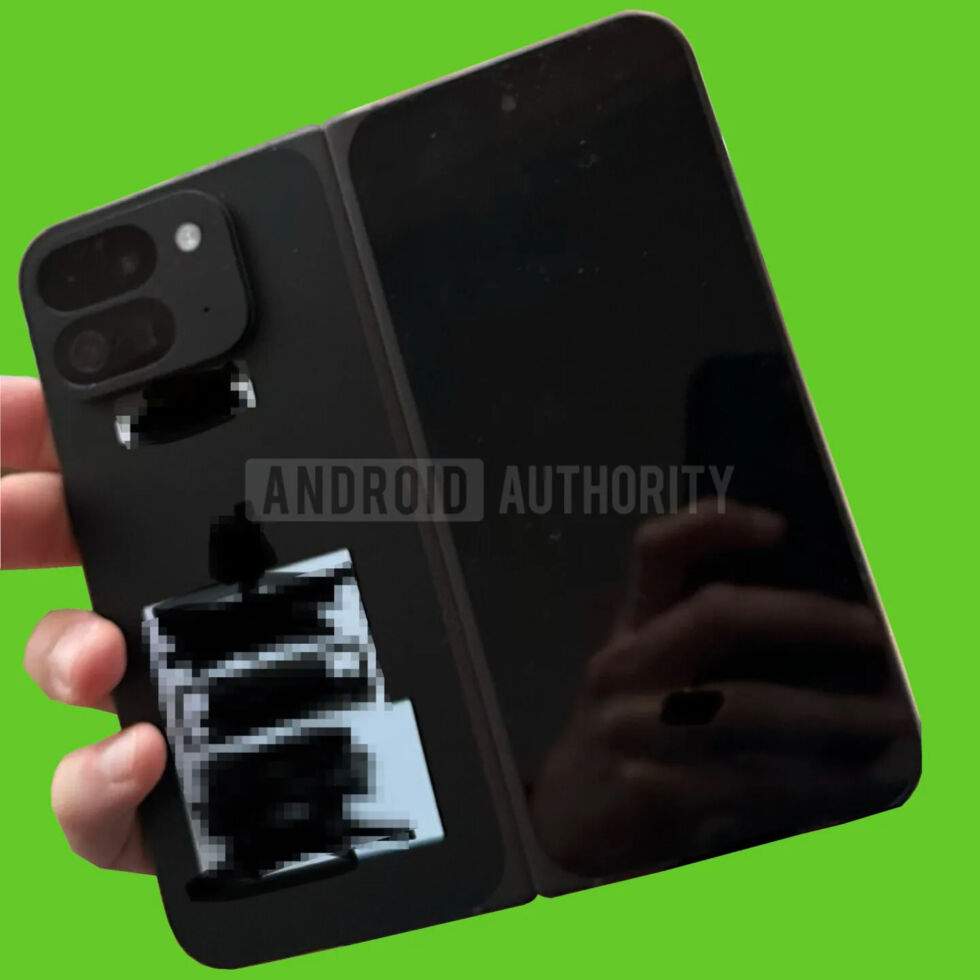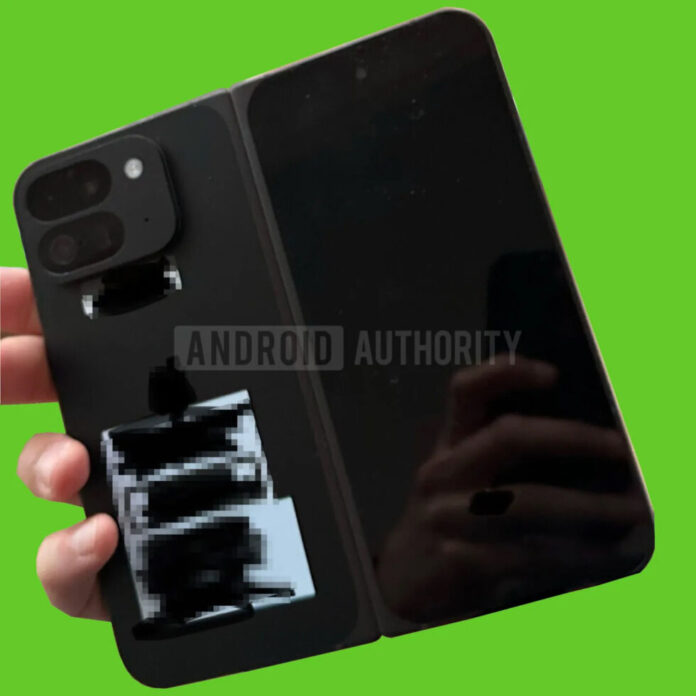-

The alleged Pixel Fold 2 prototype. [credit: Android Authority ]
Google still isn't giving up on the foldable smartphone game, and rumored details about the Pixel Fold 2 are slowly coming out. The most eye-popping news is from Android Authority's Mishaal Rahman, who claims to have a live picture of an "early prototype" of the Pixel Fold 2.
A lot about the Fold 2 is different, starting with the camera bump on the back. In every Pixel review, we praise the trademark camera bar for 1) looking good and 2) having a symmetrical design that gives the phone a stable base when placed on a table, and this prototype would seem to walk both of those things back. The supposed Pixel Fold 2 prototype switches to a lopsided rear design with a camera block in the top-left corner of the phone, just like everyone else in the industry. It's hard to tell what's going on with the camera block, but there is certainly room for four camera lenses now instead of the usual three. The top-left post almost looks blank in the photo, though—it could just be a spot for a laser autofocus sensor.
One justification for the wonky camera block could be that the device is narrower and doesn't have room for the full-length camera bar anymore. The report says that "the cover screen is narrower, but more importantly, the inner screen’s aspect ratio is closer to a square." One of the best parts of the Pixel Fold design was that it opened up into a wide-screen device and had enough horizontal room to show a tablet app layout. If you're in the "foldable should open up into a tablet" camp, then a square screen would be a disappointment. The other option, followed mainly by the Galaxy Fold series, is "a foldable should open up to show side-by-side phone apps," and a square screen puts you more in that camp. You could argue that, given the lack of Android tablet apps, a square-ish foldable is a more practical choice. I'd argue the Pixel line should be aspirational and that foldables aren't yet ready for "practicality" arguments, given all the durability issues that still plague the devices.
Read 3 remaining paragraphs | Comments
Ars Technica - All contentContinue reading/original-link]




